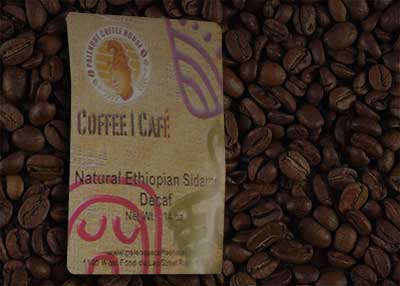Posted on Apr 2, 2012

Costa Rica is much like Panama when it comes to coffee: high quality and lots of it. Much of the climate is the same, and so is Costa Rica’s reliance on higher altitudes to suit the Arabica coffee plants grown there. Tres Rios: This region is known for a multitude of coffees such as La Lapa, and is considered among the best places Costa Rica cultivates its coffee. It’s closer to the Pacific coast than you might think, and coffees from this region are often used in espresso making in order to get the full essence of their flavor and a clean, almost nutty aftertaste. Bean description: As stated, these beans are ideal for espresso making because of their nice, clean aftertaste. Additionally, this is a mild coffee that is not too rich for people who prefer to avoid bitter coffee flavors. Monte Crisol: A very sweet coffee grown in the west central valley of the country. It’s great for single origin coffee lovers who go to Starbucks and want to buy a coffee they can know and appreciate. Bean description: Clean, sweet, and full, this is a great versatile coffee that works well in American palates –hence its popularity in many North American coffee shops. Villa Sarchi: We mentioned this Bourbon coffee before, like Monte Crisol, but it’s worth mentioning twice. Admittedly this coffee can be difficult to grow, which means its flavors can be off-putting to some, but there’s no reason not to give this coffee a try. Bean description: Although not as delicate and subtle as some of the other Costa Rican coffees, it still provides for a full cup and a somewhat hearty...
Read More »
Posted on Mar 29, 2012

Guatemala is not far from Panama when it comes to single origin coffee – in fact, it has some great varieties of its own that rival anything that is produced in Central America (and perhaps even South America for that matter). If you skip the Guatemala coffee for a more popular name like Columbian coffee, you’re about to find out what you’ve been missing out on. Antigua: Produced – where else? – in Antigua, Guatemala, this is one of the premier names in all of single origin coffees. The elevations in Guatemala are perfect for Arabica coffees, and Guatemalans use this to full effect when cultivating Catuai, Caturra, and Bourbon varieties of Arabica. Bean description: A very hard bean, these beans generally grow in cooler regions of Guatemala some one mile above sea level. Consistent humidity keeps the beans themselves consistent and offers a very predictable (which is a good thing) quality amongst the coffee plants. It’s hard to find a bad Guatemala Antigua coffee bean. Atitlan: These coffees come from the land surrounding Lake Atitlan, an area that gets a lot of rainfall every year which means higher humidity as well. A lot of the coffee grown in this area is grown with organic fertilizers because pests aren’t a major problem, which is good for single origin coffee seekers looking for something that hasn’t used a lot of inorganic materials. Bean description: Rich and full, these beans of Bourbon and Typica plants tend to be great for producing powerful coffee flavors for true enthusiasts. Coban: This coffee comes from the north-central area of the Guatemala. Like most of the coffee grown in Guatemala the beans here come from high altitudes that are friendly to varieties of Arabica. Bean description: A rich, spicy flavor makes Coban a great coffee for someone who wants a little kick with their breakfast. The beans themselves live up to the “wine of the bean” nickname of coffee from Arabia because these beans also have a slightly fruity and wine-line...
Read More »
Posted on Mar 26, 2012

Located between Colombia and Costa Rica (themselves no slouches when it comes to coffee), Panama is one of the greatest locations in the world even without considering coffee. The distance between the Pacific Ocean and the Atlantic Ocean shrinks to almost nothing here, which is why the Panama Canal was built. Additionally, Panama is well-suited for coffee growing because even though it is a narrow strip of land, Panama has a “spine” of tall, elevated mountains running down its middle – the elevation works great for Arabica varieties of coffee. The temperature is kept stable both by the oceans and this elevation, and the result is some of the best coffee in the western Hemisphere. Much of Panama’s premium single origin coffees come from estate coffees, which are single origin coffees traced to a specific farm or series of farms. Names like Hacienda La Esmerelda, Duncan Estate, Volcancito Don K, and Kotowa Estate are just a few of the people offering single origin Panama coffee. Panama Geisha: Grown in the Boquete area in western Panama’s Chiriqui Province, Geisha is probably the variety of coffee that is known best to single origin fans. In fact, it is a type of Arabica coffee that is grown in Panama’s highlands, which feature the kind of environment that is particularly friendly to Arabica varieties. Specifically, Hacienda La Esmerelda is a popular single lot coffee that has won awards and really put this type of coffee on the map. Bean description: Geisha coffee comes from long fruits that produce sweet and citrus-y flavors that remind one almost of eating a sweet lemon. They’re also well known for having a significant aftertaste, which is good for those who like to savor their morning...
Read More »
Posted on Mar 22, 2012

The section on Central America is a good opportunity for us to address a potential point of confusion to those new to single origin coffee: the difference between single origin coffee and micro-lot coffee. Because Central America is just a small strip of land compared to some of the bigger coffee-producing areas (like Africa and South America), you’ll often see these differences mentioned when single origin Central American coffee is brought up. Let’s start with some definitions. Single Origin Coffee: You’re already aware of what this was, or else our introduction and subsequent sections have failed you! Single origin coffee is coffee that comes from a specific place – generally, it refers to regions of a country (as in the case of Ethiopian Harar, for example). Estate Coffee: This is still coffee of a single origin, but with a specific single origin, such as one estate or one farm. The Legetet Estate in Kenya is a good example of an estate coffee we’ve already encountered here. Estate coffees may also refer to coffees grown over a series of estates, however, which leads us to… Micro-Lot Coffee: This is coffee that is traceable to a single farm, a specific altitude range, and a specific time in which the coffee was harvested. In essence, “Micro-Lot” is the purest version of single origin coffee you can find – unless you have a specific tree picked out from a Micro Lot! In the definitions above, each type of coffee is a subset of the definition above it. Micro-Lot coffee is a type of Estate Coffee, which is a type of Single Origin coffee. They are all single origin coffees, which is an important fact to keep in mind especially as you see the terms used interchangeably throughout this...
Read More »
Posted on Mar 19, 2012

As far as coffee-producing regions go, Central America is almost the opposite of Africa. Sure, they share some important characteristics – proximity to the sun along the equator, for example – but the similarities basically end there. First, Central American climate is more heavily influenced by the oceans than is Africa simply because Central America is a comparatively tiny swath of land. In addition, Central America’s lack of size is a reason there is more focus on growing coffees that have high yield and short branch-to-branch distance…it’s simply more profitable to grow that kind of coffee in Central America. Second, Central America focuses mostly on Arabica coffee. Its elevation is much more suited to this kind of coffee, with many mountainous regions dominating the landscape even on the narrow strips of land that connect North America to South America. This rich environment has also led to a number of Arabica varieties being cultivated across Central America, the most central of which include Bourbon, Geisha, and Caturra. The soil of Central America is well-suited to growing coffee in general, especially in the higher-elevation areas. The consistent temperatures in these areas makes for good, hearty coffee growing, and offer a general “cooling off” from the rest of the warmer areas of Central...
Read More »
Posted on Mar 15, 2012

Although much of Central America can certainly be thought as a sort of extension of the great South American coffee tradition – similar climates and landscapes make the types of coffee comparable in many ways – for this section we’ll try to focus on coffees that are more exclusive to Central America. Some of these coffees are also grown in South America, but there will be more exploration of full South American coffees in the South America section. Here are some of the more popular varieties of coffee grown in South America. Like the previous overview for Africa, some of these are larger categories and varieties of coffee and others are great single origin coffees: Caturra: A mutation of the Bourbon variety, this coffee was first discovered in Brazil in the mid-20th century before making its way up to Central America. It’s easy to grow and there is less space between branches (it also has a high yield and will grow very quickly), which makes it great for Central American countries without a lot of land. Pacas: A variety that comes from Caturra, this is mostly at home in El Salvador. Like Caturra, it is generally easier to grow than other coffee varieties, which means it also takes up less space. Like many Caturra-based varieties, Pacas can be quite resistant to disease, which helps the ease with which they grow. Villa Sarchi: A Bourbon mostly found in Costa Rica, Villa Sarchi coffee is similar to Pacas in many respects. Both Villa Sarchi and Pacas varieties come from Caturra, and the ease with which it grows contrasts with its generally-renowned poorer “cup” quality than coffees that can be somewhat more difficult to grow. Costa Rican Monte Crisol: Known as a sweet coffee, Costa Rican Monte Crisol grown in the west central valley of the country is a favorite amongst single origin seekers who want a great coffee from Costa Rica – or from Central America in general. Guatemala Antigua: This is generally considered Guatemala’s great contribution to the coffee world. The elevations in Guatemala tend to be around a mile above sea level for the coffees grown here, which is often ideal for the Arabica varietals grown in the Antigua region. Catuai, Caturra, and Bourbon – all varietals of Arabica – are grown here. Panama Geisha: Geisha is a variety in and of itself (Coffea Arabica var. geisha) and has been known as one of the top-tasting coffees coming from the entire region in recent years, winning a number of awards. Because the variety comes from a very specific location – Boquete in the Chiriqui Province in western Panama – it has also become a favorite of those people who seek single-origin coffees with a pure, unique Central American...
Read More »






